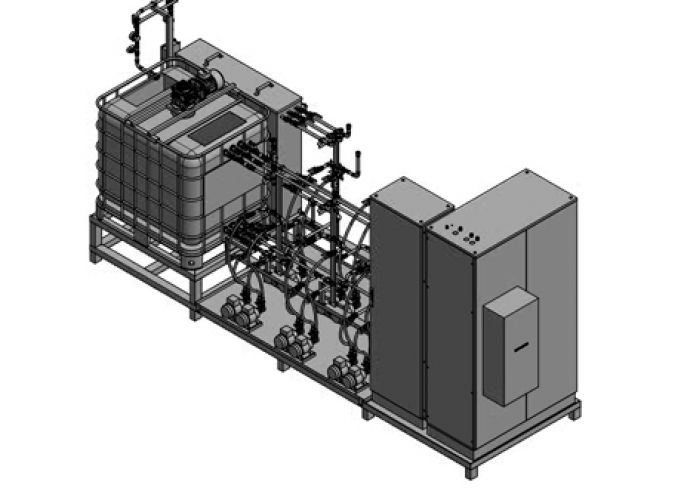
Matthews Environmental has developed and installed numerous modular systems for "Selective Non-Catalytic Reduction" (SNCR) of nitrogen oxides (NOx) in waste incineration and cremation processes, mounted on skids and applicable to various lines within the same facility. The reduction of NOx is achieved by injecting a diluted reagent in an aqueous solution into a secondary chamber: this method utilizes a 30% urea solution to break down NOx into N2 and H2O, achieving an efficiency of approximately 50-60% reduction.
For this purpose, the system designed by GEM includes continuous analysis of NOx in the chimney, to adjust the urea quantities based on the real-time measured NOx values. In this way, injection is performed only when necessary and is automatically managed according to data received from the continuous NOx monitoring system.
The Importance of NOx Reduction Filtration
The implementation of NOx reduction filtration systems in the incineration or cremation process holds paramount importance in mitigating environmental impact and safeguarding public health. These systems, exemplified by technologies such as Selective Non-Catalytic Reduction (SNCR), play a crucial role in minimizing nitrogen oxide (NOx) emissions, a significant contributor to air pollution.
By effectively reducing NOx emissions through innovative filtration systems, we not only adhere to stringent environmental regulations but also contribute to the creation of cleaner air. NOx reduction during incineration or cremation is imperative to curbing the formation of pollutants that can pose serious health risks and contribute to the deterioration of air quality.
The value of these filtration systems lies in their ability to strike a balance between the need for waste disposal and environmental responsibility. By incorporating such technology, we demonstrate a commitment to sustainable practices and the well-being of our communities, ensuring that the process of waste disposal is conducted with the utmost regard for environmental stewardship and public health.







